How To Get Rid Of Bugs In Snake Plants?
Snake plants are a sturdy plant that can thrive in almost all conditions. However, pests on the snake plant can be a nuisance to deal with. But why do pest gets attracted towards snake plant. Also, how can we deal with these pests on our snake plant? Let’s find out.
Scales, gnats, spider mites, aphids, and whiteflies are common pests attracted to the snake plant. Overwatering, high humidity, and poor air circulation are the root causes of pest infestation in the snake plant. Avoid overwatering, regularly lookout for pests, and use organic neem-based pest repellent to keep them at bay.
With proper treatment, you can fight those stubborn pests and get your plant back healthy and thriving. Read further to learn about the pests and their solution to save your snake plant’s life.

Please note: Simplify Plants is reader-supported. Some links in the post are affiliate links and I get a commission from purchases made through links in the post.
Common Bugs In Snake Plant
Some common bugs that gets attracted towards snake plant are:
- Scales
- Fungus Gnats
- Spider mites
- Whiteflies
- Aphids
Scales
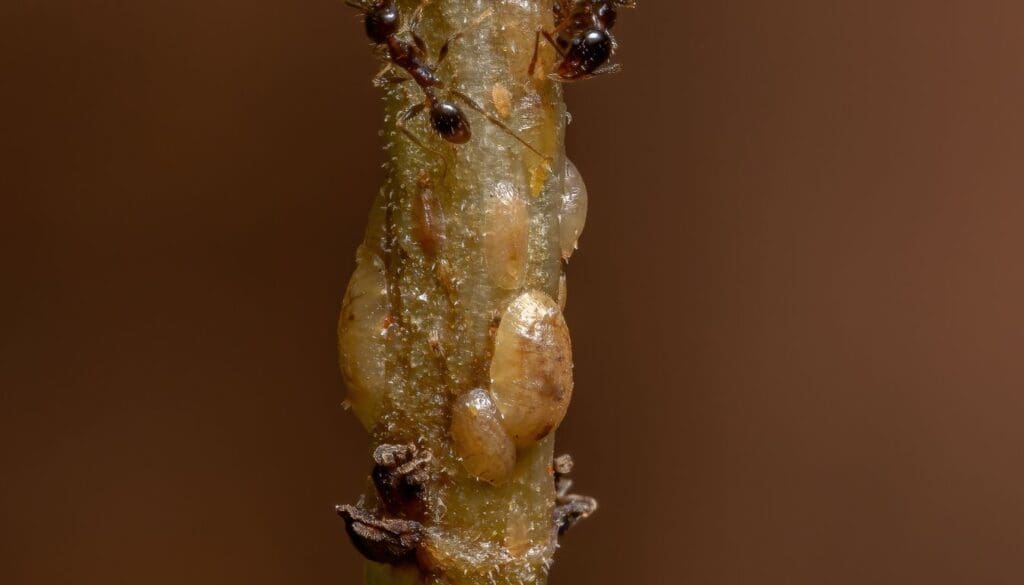
| Identification | Signs |
|---|---|
| Brown soft scales –Flat scales, oval in shape, broader at the hint end. –Secrete honeydew. –Vary in color. –Adult scales are 3-4 mm long, and 2 mm wide. Armored scales –Covering made of molted skins. –Feeds under his protective layering. –Does not produce honeydew. | –Feed by inserting needle-like mouthparts into the plant tissue and sucking out sap from the plant. –Inhibit photosynthesis by blocking light. –Leaf drop –Leaf yellowing –Yellow spots –Black fungus –Wilting –Discoloration –Reduced vigor –Slow growth |
Fungus Gnats

| Identification | Signs |
|---|---|
| Adults –Small, delicate bodied flies with long legs. –Harmless as they do not bite or feed. –Create a nuisance in the group. –Grow in damp soil. Larvae –Feed on algae, fungi, and plant roots. -Have a shiny black head.-Whitish to the transparent body. | –More noticeable during fall and winter –Sudden wilting –Loss of vigor –Yellow leaves –Decayed plant matter –Poor growth –Damage seedlings, young plants, cuttings. |
Spider mites

| Identification | Signs |
|---|---|
| –Patterns of silvery dots or stippling on the leaves. –Relatives of spiders. –Target the stomata of leaves. –Difficult to see from naked eyes. –Find on undersides of leaves. –Reddish-brown or pale in color. –Pierce leaf tissue and such plant fluids. | –Tiny spots on leaves –Holes in the leaves –Discoloration –Leaf drop –Weak plant –Curling –Brown spots –Plant death |
Whiteflies

Whiteflies are annoying insects and create a problem for the plant’s health. They secrete honeydew, which increases the risk of fungal diseases and attract other pests.
| Identification | Signs |
|---|---|
| –Tiny, heart-shaped bugs. –Merge with the color of the leaves they are stuck with. –Moth-like insects, white powdery wings, and short antenna –Found on tops of leaves. | –Leaf yellowing –Stunted growth –Reduced vigor –Weak plant –Transmit plant viruses |
Aphids
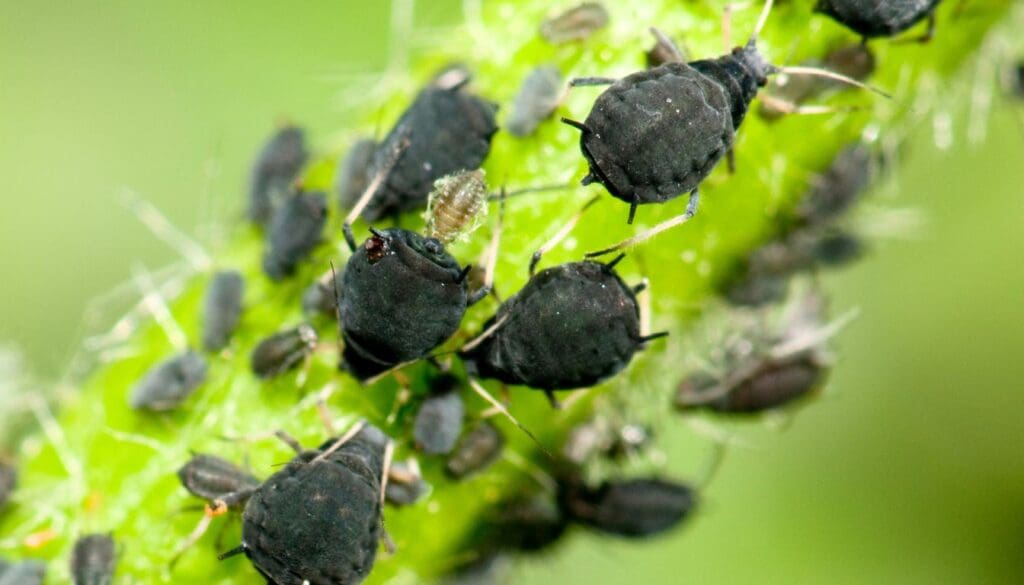
| Identification | Signs |
|---|---|
| –Secrete honeydew leads to black sooty mold. –Vary in color. –Comes in different shapes and sizes. –Very tiny soft-bodied bugs. | –Inhibits photosynthesis –Deprives the plant of energy –Decline in overall plant vigor –Curled foliage –Wilting –Yellow leaves –Poor growth |
Why does my snake plant have bugs?
Various factors can lead to pest infestation. Some of the major ones are:
- High humidity
- Overwatering
- Poor Ventilation
High Humidity

High humidity can become a problem for snake plants. Firstly snake plants like average humidity level, and if you keep them at a high humidity level, then they should be monitored promptly.
Pests thrive in a moist environment as they need some moisture for their bodies; they can also not survive for long in hot weather. In high humidity, pests naturally attract themselves to such areas and plants.
When snake plants stay in high humidity for long, the leaves also give signs through yellowing, wilting, and pests get perfect condition to live on and slowly make their home in such plants.
Overwatering
An overwatered plant is an open invitation to pests. When you keep overwatering your plant, the soil keeps suffering as they do not get the time to dry out. Snake plants do not like to stay in the water and also lead to root rot.
This condition attracts pests, and they’ll thrive there. The plant will suffer due to overwatering related issues and pests infestation, giving the plant owner no option but to dispose of them completely.
The plant needs to dry out between watering with other cultural conditions balanced. The drainage system also plays an essential role while watering. If the pot does not have proper drainage, the water will not drain out completely, keeping the soil soggy.
Also read: How much water do snake plant need?
Poor Ventilation
Snake plants like aerated soil and good airflow around them to thrive and stay healthy. If the plant is kept in a group or an area with inadequate air flow, it can attract pests.
It will support fungal and bacterial growth as well as root rot. The soil will not dry out quickly, and as a result, it creates perfect conditions for pests attack.
Also read: Best placement for snake plant
How do you get rid of bugs on snake plants?
Snake plants, when infested with pests, can be treated in different ways. It would be best if you immediately took measures to control the pest infestation.
There is an organic and chemical method to treat pests; you can choose which method you want.
PRUNE & ISOLATE
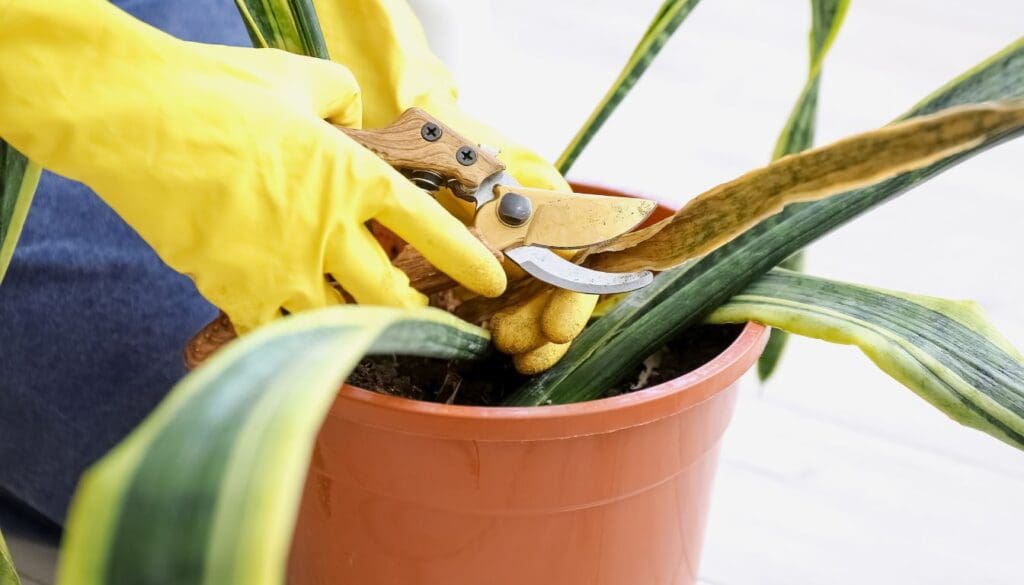
The first thing you should start with is by isolating the infested plants away from other plants. Prune the visible infested sections and damaged leaves and dispose of them completely.
Note: Disinfect and clean the area where the infested plant was before and also sanitize your hands.
SPRAY WITH PLANT-BASED MITICIDES
Plant-based miticides containing natural ingredients are available, which will not harm the plant and treat the pests effectively.
Spray the solution on the entire plant, but it is always advised to spray it on a leaf to test and avoid any harm.
Some effective sprays you can choose from are:
- Pyrethrum: Derived naturally from a relative of the chrysanthemum, targets the insect’s nervous system and kills them.
- Cinnamate: This pesticide is derived from cinnamon oil, effective against all stages of pests, and It is non-hazardous to plants. Spray the solution on the infested plant every three days over a couple of weeks to get rid of all the annoying pests.
- Neem oil: Neem oil is a versatile treatment for insects of all kinds. It’s derived from the seeds of the neem tree and also works as insect repellants. You’ll have to regularly re-apply neem oil all over the plant for complete relief.
- Rosemary oil: Rosemary oil is an effective treatment to deter plant pests. Dilute rosemary oil with water and spray it all over the plant. It is non-toxic to plants and humans.
MAKE YOUR OWN HERBAL TEA MITICIDE
Tea made of cinnamon is an underrated but excellent method to treat pests. Mix 1 tbsp cinnamon, 1 tbsp cloves to a quarter of water. Boil the mixture, cool it and add crushed garlic.
Strain the tea and let it cool. Add a splash of dish soap to the mixture and pour it into a spray bottle. Spray on the leaves with the herbal tea every three days on the plant till complete relief.
PUT HOUSEHOLD CHEMICALS TO GOOD USE
If you want to create your own medicine from the kitchen rather than going for fancy miticides, you can look for a few things to prepare homemade insecticides:
- Rubbing alcohol: Rubbing alcohol is a very effective way to deter pests. All you need to do is mix alcohol with water, spray it on your plant or wipe the leaves with the solution. You can mix 1:1 alcohol and water to make the spray.
- Dish soap solution: A straightforward way to treat pests is by mixing 1 tsp liquid dish soap to 1-liter water and pouring it in a spray. Now spray or wash the plant with this mixture and then wash with plain water. Repeat regularly for full effect.
Note: When buying chemical pesticides, insecticides always read the label directions and precautions, follow it to avoid and damage to the plant.
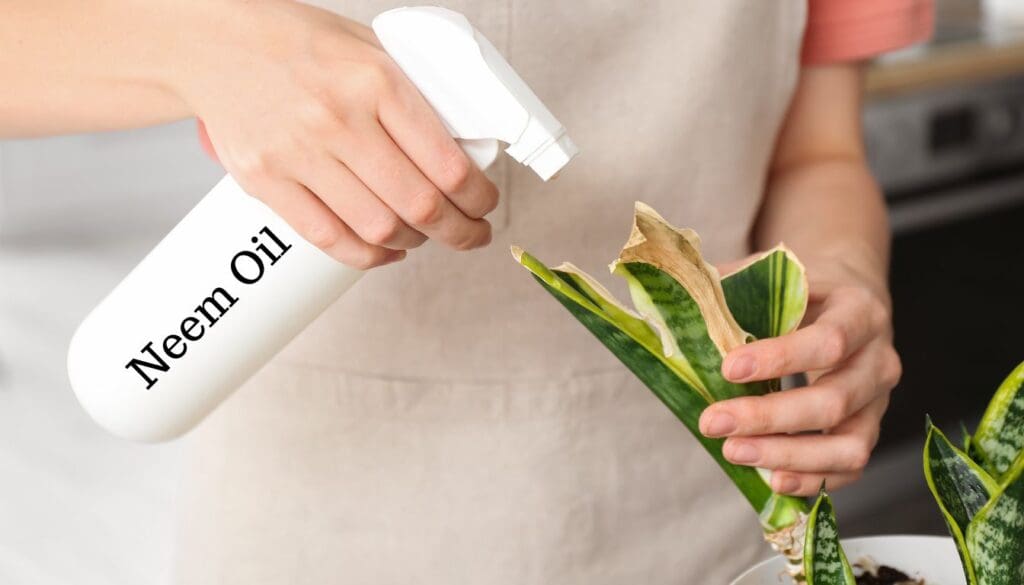
GIVE YOUR PLANT A SHOWER
You can fight down these pests by hosing down the plant with room temperature water, especially washing properly from the undersides of the leaves.
Do this when you water the plant and make sure that the excess water is drained out completely. Keep the plant in bright indirect sunlight for at least 6 hours a day.
CONSIDER CUTTING YOUR LOSSES
We know you are already going through a challenging period. However, suppose those pests are still hanging on after trying your hands on everything possible.
In that case, you might have to get rid of the infested plants and start fresh by disinfecting the areas wherever the plant was kept and thoroughly cleaning it.
Tips to prevent bugs on snake plant

- To prevent the snake plant from a pest infestation, keep the plant in a healthy environment.
- Pests thrive in humid and moist conditions. Make sure to keep the plant hydrated by not drowning.
- Do not mist around the plant. Maintain humidity level about 40% around the plant to keep the pests at bay.
- Use any miticides spray once in a while on the plants to build up the plant’s immunity to keep the pests away.
- Use neem oil spray as a preventive measure.
- Do not overwater and over-fertilize the snake plants. It will make the plant vulnerable and attract pests and also give support to fungal growth.
- Keep cleaning the leaves every few does without keeping them moist.
Sources: Common insect pests and diseases.
Recommended Garden Supplies
| Product Image | Our Recommended Gardening Supplies | Check Offers! |
|---|---|---|
Top Top
Top
Top
Top
Top
Top
Top
Top | rePotme Houseplant and Tropical Classic Potting Soil Mix | Check Offer On Amazon |
 Top
Top
Top
Top
Top
Top
Top
Top | Espoma Organic Indoor Plant Food | Check Offer On Amazon |
 Top
Top
Top
Top
Top
Top
Top
Top | GooingTop LED Grow Light 6000K Full Spectrum Clip Plant Growing Lamp | Check Offer On Amazon |
 Top
Top
Top
Top
Top
Top
Top
Top | Soil Moisture Meter | Check Offer On Amazon |
 Top
Top
Top
Top
Top
Top
Top
Top | Govee Hygrometer Thermometer, Bluetooth Enabled! | Check Offer On Amazon |
 Top
Top | LEVOIT Humidifiers for Large Room(Best For Plants) | Check Offer On Amazon |
 Top
Top
Top
Top
Top
Top
Top
Top | Upgraded DIY Automatic Drip Irrigation Kit, 15 Potted Houseplants Support | Check Offer On Amazon |
 Top
Top
Top
Top
Top
Top
Top
Top | Stainless Steel Heavy Duty Gardening Tool Set | Check Offer On Amazon |
 Top
Top
Top
Top
Top
Top
Top
Top | Bonide Insecticidal Soap | Check Offer On Amazon |
 Top
Top
Top
Top
Top
Top
Top
Top | Bonide 32 oz Spray Neem Oil for Organic Gardening | Check Offer On Amazon |
 Top
Top
Top
Top
Top
Top
Top
Top | Garden Safe Fungicide | Check Offer On Amazon |


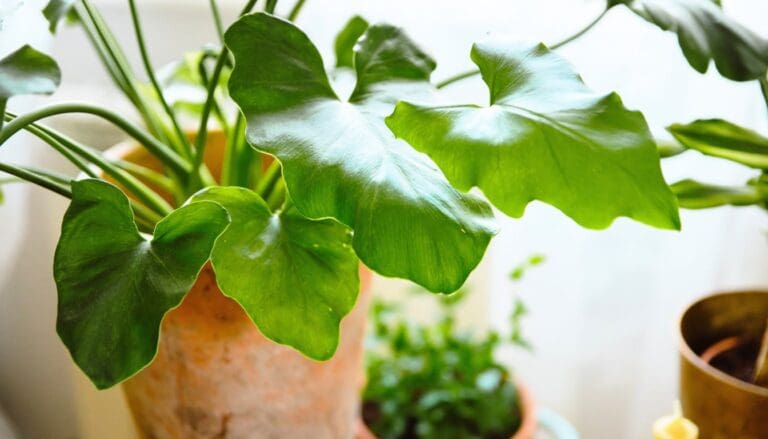
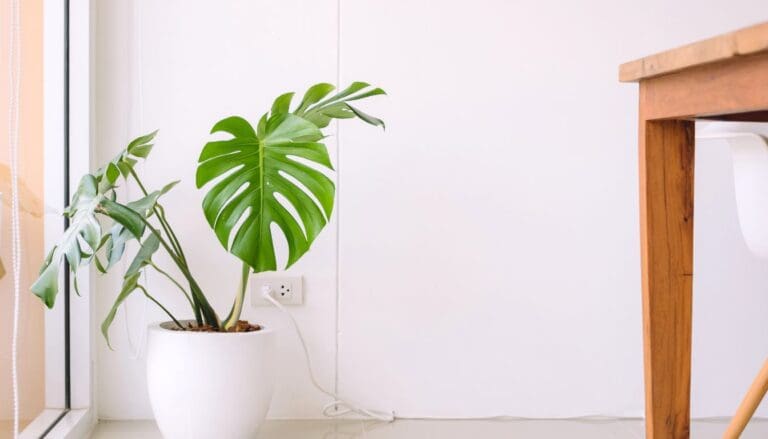


I recently was given a snake plant that I believe was kept outdoors for the summer. I definetely have fungus gnats and will use one of your suggested methods to take care of however, along with the gnats it has a foul smell. Smells to me, like a rotten onion. At first look the plant appears to be growing well but that smell is really bad. Any suggestions would be great!!